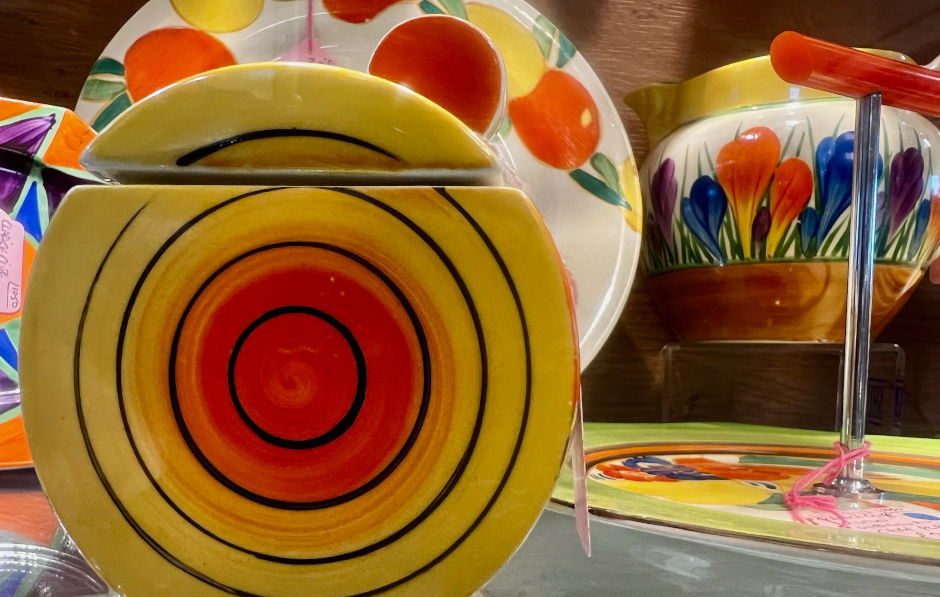
20th century ceramics is a highly popular area of collectables for the novice and the experienced collector alike. Our latest guide looks at how to identify it, and what to look for.
The word ceramic is derived from the Greek for ‘of pottery’ or ‘for pottery’ and the three main types are porcelain, stoneware and earthenware. The wide variety of items that fall under the ceramics umbrella means it can be difficult to identify the era a piece comes from, but the following are visual elements that should be considered:
Shape
An important aspect in the visual identification of a piece is its shape. Pieces from the Arts and Crafts movement and the Art Nouveau period have a classical form with pieces moving forwards developing a more angular form. More so than this, however, is that quality 20th century ceramics are identified not just by well executed shapes but well executed shapes that are the perfect foil to the pattern. Tableware and vessels such as jugs were well proportioned and ceramic figurines during this period were depicted in anatomically correct proportions and featured areas of detail and texture, for example in clothing and hair.
Decoration and glaze
The glaze and decoration of a ceramic piece is as unique to the potter or the studio as the painting style of an artist like Picasso or Van Gogh is. Experience and research will help you to identify the decorations and glazes associated with particular artists and the best way to gain this is to visit museums and exhibitions where piece from the same maker can be viewed; in this way you will begin to recognise similar pieces.
The 20th century was a time of great innovation in glazes and decorating techniques, with potteries such as the Ruskin and Pilkington’s Royal Lancastrian at the forefront of formulating new effects. The glazes used became in themselves the decoration, and were no longer just a backdrop to it. Older potteries too were not left behind and examples of this include Wedgwood’s Fairyland lustre wares and the combination of gilding and glaze that is seen in the Art Deco designs from Carlton Ware and Shelley.
Painted and printed patterns and decoration
The way in which a pattern has been applied to a ceramic piece and the techniques used to do so can indicate age. The 20th century had two main techniques that were used – hand painted patterns and decoration, and transfer printing or lithography, with some pieces featuring both techniques. Brush strokes are likely to be visible on hand painted pieces while a printed pattern will be made up of fine dots. Transfer printing was not just a way to speed up the decorating process and was often an integral part of the design, as in the gold transfer printing seen on pieces from the early part of the century from manufacturers such as Carlton Ware and Maling, which were too complex for hand painting.
Colour
The colours of 20th century ceramics have become key in recognising pieces from the era. The deep toned, jewel-like shades of Moorcroft, the bright, contemporary colours of Lucie Rie’s hand-thrown pieces, SylvaC’s unmistakeable green and orange tones and of course Clarice Cliff’s iconic bright and bold (some would even say garish) colours, are all typical of the various stages of the last century.
20th century ceramics from Hemswell Antique Centres
Spend a day browsing our four buildings and you will start to recognise 20th century pieces from all the leading names in the world of ceramics. Whether you prefer the unmistakeable work of Clarice Cliff or the fine figures of Beswick, the floral focus of Moorcroft or the iconic shapes of Troika, our dealers have the finest examples from throughout the period. For those who cannot get to us in person, our online 20th century ceramics department features more than 500 pieces so you are bound to be spoilt for choice.